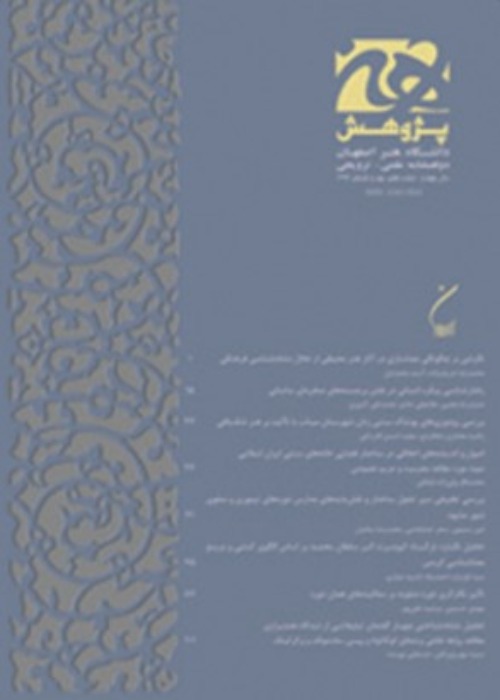A Comparative Study of Japanese Kumiko Art and Iranian Masouleh Gereh-Chini
Japan and Guilan being located in similar climates have experienced same architectural and artistic characteristics such as Kumiko art and Gereh-Chini. Due to the fact that so far no research has been conducted on the similarities and differences between Kumiko and Gereh-Chini, the present study will try to investigate the components forming the two arts. With the aid of comparative studies, the authors aim to answer the following questions: What factors have been effective in the formation of Japanese Kumiko art and Masouleh's Gereh-Chini? Are the geometric motifs of the two arts categorized in several levels? What are the similarities and differences between the two arts? This investigation is based on descriptive-analytical and comparative studies, and library and field methods have been used in the recognition of Gereh-Chinis. The results of the research show that the most effective factors in the formation of Kumiko art are the existence of concepts such as plant forms, animals and cultural interactions with China and India, traditional clothes of China and Japan, elements of traditional architecture and the living environment of Japan. Concepts of Gereh-Chini include celestial objects, religious symbols, holy names and numbers, simple and complex geometric shapes, non-native patterns, animal motifs and native plants of Masouleh. Among the main differences and similarities between the two arts, we can point out the presence of complex geometric structures, simple materials and the more delicate framework of Kumiko compared to Gereh-Chini. Komikos are used in dividing spaces and Gereh-Chinis are used in openings. Kumiko joints are in the form of mortise and tenon and Gereh-Chinis are in the form of mortise and tenon and ghavarehbori. The results of the research show the existence of formal similarities, the influence of religious and historical concepts and the use of same plant forms and animal motifs in the two arts.
- حق عضویت دریافتی صرف حمایت از نشریات عضو و نگهداری، تکمیل و توسعه مگیران میشود.
- پرداخت حق اشتراک و دانلود مقالات اجازه بازنشر آن در سایر رسانههای چاپی و دیجیتال را به کاربر نمیدهد.






